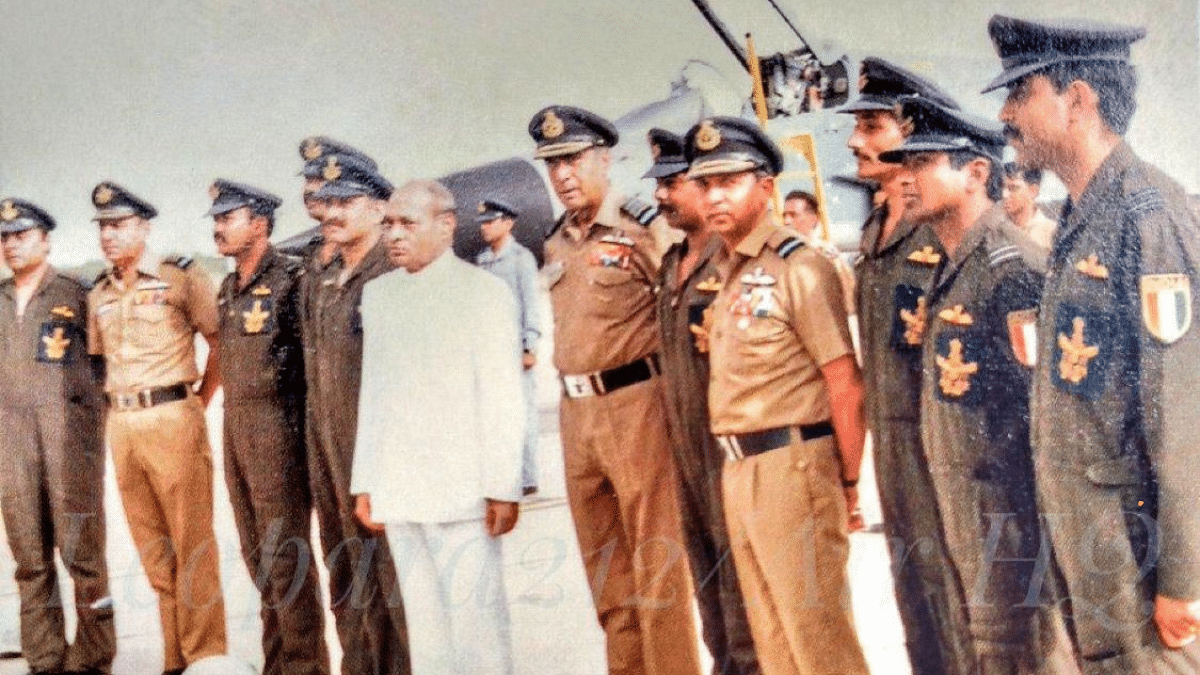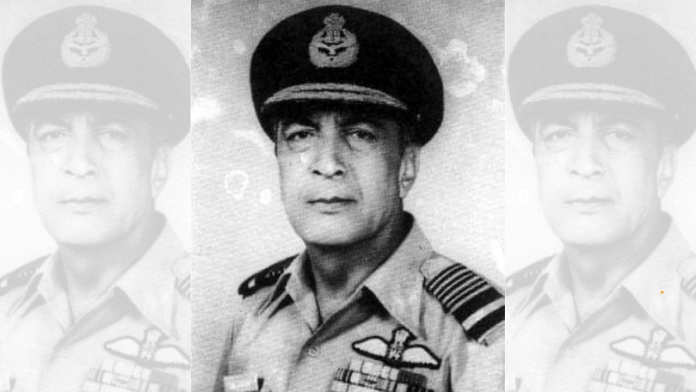New Delhi: IAF Chief Air Chief Marshal Amar Preet Singh officially announced Saturday the Indian Air Force’s S-400 Triumf air defence system shot down five Pakistani fighter aircraft and a large airborne surveillance platform from a distance of about 300 km during Operation Sindoor in early May.
He also revealed that several F16 fighter aircraft undergoing maintenance at Pakistan’s Jacobabad air base were damaged and that a Saab Erieye, an Airborne Early Warning and Control (AEW&C) system, aircraft was destroyed at the Bholari air base.
He made these remarks while delivering the keynote address at the 16th Air Chief Marshal L.M. Katre Memorial Lecture, an event attended by senior IAF officials and representatives from the Hindustan Aeronautics Limited (HAL).
Instituted in memory of Air Chief Marshal Lakshman Madhav Katre, the IAF’s 12th chief, the annual lecture pays tribute to a leader who combined front-line operational experience with a sustained push for modernisation, training reforms and stronger links with industry.
ThePrint looks at the life and legacy of ACM Katre who became the second air force chief to die in harness. The other was Air Marshal Subroto Mukerjee, who died at the age of 49 in November 1960, caused by choking on food during an official visit to Tokyo.
From leading a Spitfire squadron early in his career to overseeing the induction of Mirage 2000s, ACM Katre’s service spanned multiple eras of air warfare and still continues to shape the IAF’s journey, 40 years since his demise.

In Royal Indian Air Force
At 17, ACM Katre entered the Royal Indian Air Force as an officer cadet in 1944, receiving his commission a year later. His career spanned the closing years of the Second World War and the formative decades of independent India’s air power.
Katre’s early flying years were shaped in the cockpit of piston-engine fighters, most notably the Supermarine Spitfire Mk.VIII, which he flew operationally in the late 1940s as the first generation of IAF’s combat pilots adapted wartime experience to peacetime roles.
With the service’s rapid shift into the jet age, he commanded frontline squadrons including the No. 17 Squadron, famously known as the Golden Arrows, and No. 23 Squadron, called the Panthers, that successively operated the de Havilland Vampire, the IAF’s first jet fighter, followed by the Hawker Hunter and later the Folland Gnat and MiG-21.
These aircraft not only defined the IAF’s strike and air defence capabilities through the 1950s and 1960s, but also became synonymous with the service’s growing tactical sophistication, from high-speed interceptions to close-in dogfighting.
From 1966 to 1968, Katre commanded an operational flying station. According to IAF’s official records, his tenure is remembered for the speed with which he transformed the base from routine functioning to full combat readiness, a change attributed as much to his instinct for leadership as to his meticulous attention to men and machines.
Among his innovations during this time were improvised aircraft “hideouts”, constructed with local materials, designed to conceal fighters from hostile eyes and protect them from air strikes. In subsequent simulated attack drills, the shelters proved so effective that the practice was swiftly copied across other frontline stations.
Then, in October 1968, the region was struck by the kind of disaster that tested military skill in an entirely different way. Monsoon floods tore through North Bengal, Sikkim and Bhutan, cutting off villages and stranding thousands.
Appointed the local commander of the Air Force’s relief operations, Katre oversaw a complex ballet of airlifts and supply drops into some of the most inaccessible terrains in the eastern Himalayas. In Bhutan and in Assam’s Goalpara district, his teams brought food, medicine and shelter to hundreds of refugees. Subsequently, in 1970, his dual achievements in sharpening operational readiness and leading critical humanitarian relief earned him the Ati Vishisht Seva Medal (AVSM).
During the Indo-Pakistan War of 1971, Katre served as the station commander of 18 Wing at Pathankot, a forward base of high strategic value in the western sector. Confronted with repeated Pakistani air raids, he maintained the base’s operational capability by dispersing aircraft to minimise exposure, directing rapid runway repairs after each strike and ensuring close coordination with air-defence units to protect key assets.
The IAF official records show that under his command, Pathankot’s squadron, then flying Sukhoi Su-7 strike aircraft and MiG-21 interceptors, were able to sustain both offensive sorties and defensive patrols throughout the conflict, making a significant contribution to the air campaign in the western theatre.
After the war, Katre turned his attention to training and institution-building. As Commandant of the Air Force Academy at Dundigal, he revamped the training modules completely to prioritise jet instruction, expanded facilities for ground-duty officers and introduced advanced flight simulators. These initiatives led to significant improvements in safety and training standards, which were later adopted throughout the Indian Air Force.
Subsequently, Katre went on to serve as Senior Air Staff Officer at Western Air Command and Air Officer Commanding-in-Chief of both Eastern and Western Air Commands.
Then, in 1983, Katre was appointed the chairman of the Hindustan Aeronautics Limited (HAL), where he worked to better align the IAF’s operational requirements with HAL’s production capabilities, a coordination seen as critical to the service’s modernisation efforts during that period.
Recognising that indigenous manufacturing was crucial for India’s strategic autonomy and modernisation, Katre worked to enhance coordination between the IAF and HAL. Under his leadership, efforts were intensified to streamline aircraft production schedules, improve quality control and expedite the development and induction of new fighter jets and support equipment
A year later, Katre took over as chief of the air staff. His tenure coincided with the induction of the Dassault Mirage 2000, a modern multi-role fighter that replaced old mechanical controls with electronic fly-by-wire systems, allowing more precise handling.
It also carried advanced missiles capable of engaging targets beyond the pilot’s visual range, marking a major leap in air combat technology for that time.
The first aircraft arrived in June 1985 with squadrons such as No. 7 and No. 1 beginning their conversion—training pilots to switch from flying one type of aircraft to another—between 1985 and 1986, reflecting Katre’s push to introduce advanced capabilities into the IAF.
Less than a year into his tenure, on 1 July 1985, Katre died suddenly at the age of 58 from a heart attack, becoming the second IAF chief to die in office.
(Edited by Ajeet Tiwari)
Also Read: We were given free hand, no restrictions placed on us: IAF chief on Op Sindoor






